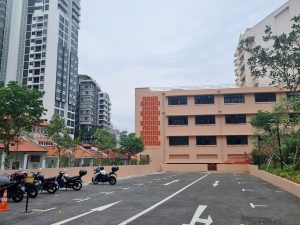Model: YQ
Money may not dictate taste, but taste is how we judge each other’s social standing.
Simply put, we filter people into economic groups based on their lifestyle choices.
For instance, we’re too ready to assume that someone who prefers Thai discos over Kilo Lounge belongs to a lower socioeconomic class (low SES). And if someone considers themselves a discerning individual with taste, we imagine they would prefer techno and house over trashy, over-commercialised electronic dance music.
Yet if two people earn an equally high income each month, the textbook definition of “social class” suggests that they automatically share comparable levels of power and wealth, and therefore fall within the same social class.
This conventional framing of class and social inequality is what Minister Ong Ye Kung’s recent speech was based on. In the speech, Minister Ong addressed growing social stratification, and called for greater social equality between classes.
He mentioned that while well-to-do families pass their privilege down to their children, low-income families find it challenging to uplift themselves, reinforcing the gap between the classes. Those with a higher-income may become “socially distant” from the rest.
As well-intentioned as Minister Ong’s speech was, it neglects the fact that cultural inequality doesn’t just fuel judgement between social classes, but within them too.
Cultural inequality (i.e. a person’s taste and lifestyle choices) frames the way we prioritise and understand the different social classes. When we judge others based on where they eat, what music they listen to, and what clothes they wear, we make assumptions about their social class. As a result, we often segregate ourselves from others within the same economic bracket, simply because we do not agree with their tastes.
But one’s social class has never been solely determined by income, education, or occupation, although it may be significantly influenced by those three factors.
Whether someone is considered high class, middle class, or low class is largely shaped by the cultural associations tagged to their taste and lifestyle preferences.
A habitus teaches us certain mannerisms, tastes, opinions and conversational style.
Bourdieu’s philosophy states that “a habitus teaches us certain mannerisms, tastes, opinions and conversational style. It is an intuitive feel for the social game. It’s the sort of thing you get inculcated with unconsciously, by growing up in a certain sort of family or by sharing a sensibility with a certain group of friends.”
Consider a designer who works on pamphlets for the government and a copywriter who writes ads for Nike. They might both work in the creative industry, and they might even earn the same salary, but both groups will assume that the other comes from a different class together.
Again, compare someone who lives in a Japanese-slash-Scandinavian inspired HDB versus another person who settled for a template design given by HDB. Both apartments could be owned by people within the same income bracket, but these people would be perceived to come from different classes.
And where travel experiences are concerned, going to India for a spiritual retreat is regarded to be in better taste than spending a couple of weekends partying in Bangkok, even if both would cost the same.
Our habitus also helps us navigate different cultural settings. Some people may feel comfortable in a music festival like Ultra, while others may find the experience tacky and uncool, much preferring the Wonderfruit or Coachella life instead. Because of our personal taste, each of us ascribes different values to the same cultural artifact.
This difference in taste is precisely what classifies us.
It’s possible to be rich, yet still be seen as part of a lower class.
Where taste is concerned, how wealthy we appear isn’t just defined by “money and possessions”, but often by the underrated signs of inequality, such as “good health, valuable experiences, and the strength of social relationships”.
Even our mundane, everyday routines speak volumes about our social class, such as where we do our grocery shopping, from Cold Storage to Sheng Siong. If you pick the former, you’re perceived to be more cultured.
All this means is that it’s possible to be rich, yet still be seen as part of a lower class. Alternately, it’s possible to be middle class, yet appear to be upper class, based on our tastes and lifestyle preferences.
As mentioned earlier, social inequality isn’t only shaped by economic inequality. It’s also deepened by cultural inequality. And social inequality will continue to exist as long as we unconsciously “try to win subtle status points, earn cultural affirmation, develop our tastes, promote our lifestyles and advance our class”.
To be clear, while this comparison usually happens between classes, the segregation is far more distinct when it happens among people within the same class. As such, we may never be as cohesive a nation as Minister Ong hopes we’ll be.
Instead of trying to fix the social gap by solely plugging policies to address income and economic inequality, we must also confront the elitism involved in our tastes and preferences for certain lifestyles, and how these uphold the exact same social gaps.
The day we are able to do that, choosing to hang out in a LAN shop will finally be regarded equally as spending the same amount of money at a boutique cafe.






